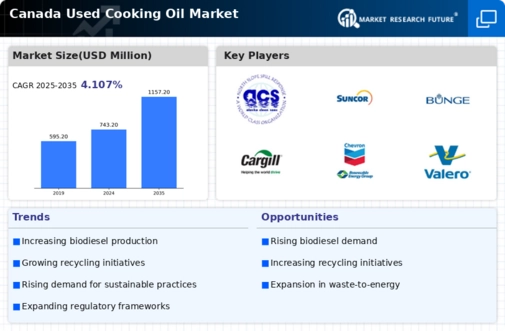The Canada Used Cooking Oil Market is characterized by a dynamic competitive landscape that is shaped by various players striving to establish their foothold and enhance their operations within this niche. The increasing emphasis on sustainability and environmental responsibility has propelled the demand for used cooking oil, known for its potential in biofuel production and other applications. Competitors in this market are leveraging their capabilities across different factors, such as collection efficiencies, processing technologies, and customer engagement strategies.
As the market expands, companies are required to adapt to changes in consumer preferences and regulatory frameworks aimed at promoting recycling and waste reduction. This scenario creates an environment rife with opportunities and challenges as stakeholders vie for market share and innovation leadership.
Alaska Clean Seas stands out in the Canada Used Cooking Oil Market with a strong commitment to environmental stewardship and operational excellence. The company is primarily known for its expertise in oil recovery and waste management, focusing on the effective collection and recycling of used cooking oil from various establishments across the country. Alaska Clean Seas has positioned itself as a reliable partner for restaurants, food manufacturers, and other businesses, helping them manage their waste responsibly.
The company emphasizes its ability to provide innovative solutions in the recycling process, leveraging advanced technology to enhance its operations while maintaining high standards of service quality.
The robustness of their operational framework allows for a seamless collection process, which strengthens their market presence and cultivates long-lasting partnerships with clients. Suncor Energy has established a significant presence in the Canada Used Cooking Oil Market by integrating its extensive energy portfolio with sustainable practices for waste management. The company is involved in the collection and processing of used cooking oil, turning it into renewable biofuels that can be utilized in various applications.
Suncor Energy’s strength lies in its comprehensive approach, which not only addresses the demands of the used cooking oil sector but also aligns with its broader environmental goals.
The company not only offers a product line that includes biodiesel derived from used cooking oil but also emphasizes the importance of sustainability in its operations. Suncor Energy frequently engages in strategic mergers and acquisitions to enhance its operational capabilities and strengthen its market position, thereby reinforcing its commitment to sustainable energy solutions in Canada. The company continually seeks to innovate and expand its services in the renewable energy segment, reflecting its dedication to creating a circular economy while maintaining a competitive edge in the market.





















